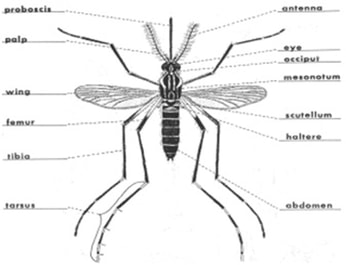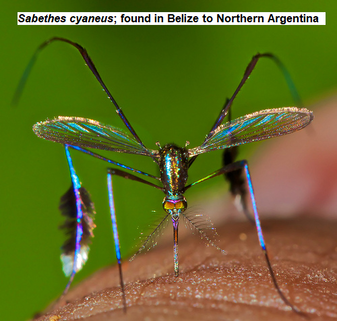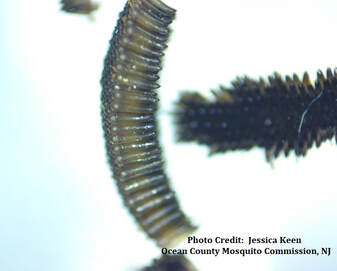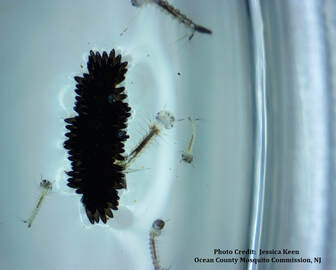Information About Mosquitoes

Mosquito anatomy differs from other similar flying insects because of the straw like appendage on their face called a proboscis. This allows the mosquito to take a blood meal from their host. The proboscis is made up of 6 different needle like parts called stylets. Their bodies are made up of three main parts; Head, Thorax, and Abdomen. Mosquitoes come in a variety of different sizes, colors, and variations that ID Specialist's use to determine what type of animal they take a blood meal from, their breeding locations, and their ability to transmit diseases. Every species of mosquito is different and there are over 40 different types found in Ocean County, over 170 in the United States, and over 3000 different species found throughout the world. Some species of mosquito can be quite beautiful with a variety of different markings and colors.
Only female mosquitoes bite, they use the protein in blood to help produce their eggs. Mosquitoes are more attracted to specific people and conditions. This can be for a number of different reasons. One study showed that mosquitoes prefer Blood Type O over all other blood types. Other factors that play a role are; the amount of carbon dioxide, lactic acid, and natural skin oils released from a person. As well as heat and even the color of your clothing. Floral scents also attract mosquitoes, since they do not actually eat your blood, they feed on plant nectar and are actually considered pollinators. A study in West Africa showed that they are more likely to bite someone who has had a beer over someone who hasn't, this may be because of the increased body temperature and alcohol secretion from the body (you can find the study here).

Why are mosquitoes more attracted to our feet and ankles?
They have hundreds of different receptors in their antennae that can detect different chemicals coming from our bodies. Our body parts emit different smells and have different microorganisms. They may be attracted to the stinky molecules in our feet. Also, because we are less likely to notice them being there.
They have hundreds of different receptors in their antennae that can detect different chemicals coming from our bodies. Our body parts emit different smells and have different microorganisms. They may be attracted to the stinky molecules in our feet. Also, because we are less likely to notice them being there.
The Mosquito Life Cycle
The mosquito life cycle has four distinct stages. 3 out of 4 of these stages require water in order for the mosquito to develop into an adult. Without water the mosquito eggs, larvae, and pupa will not develop. This is why we try to use source reduction (water removal or creating movement in waterways) as the most effective form of mosquito control. See "What You Can Do" under the More Info tab, or click HERE for more information on how you can help control the mosquito population.






